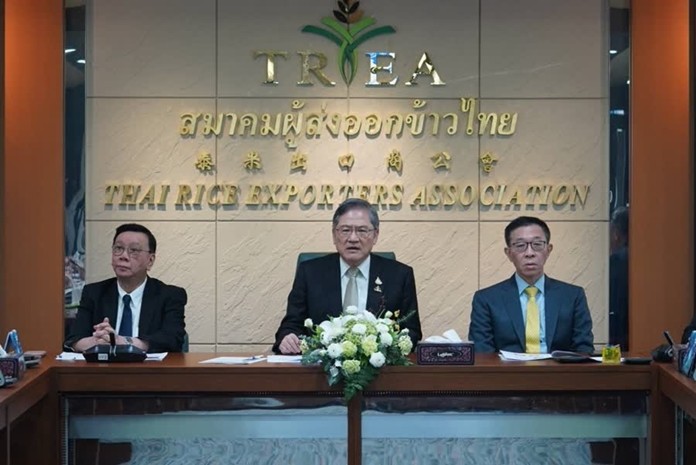
BANGKOK – The Thai rice export sector is still not performing well, with January 2020 figure dropping year-on-year by 40 percent to 570,000 tons. The private sector will be working with the government to promote new rice strain development to meet consumers’ demand better and take back the number one global rice exporter title the country once had.
Lt. Charoen Laothamatas, President of the Thai Rice Exporters Association, said this year’s projection for rice exports remains close to the previous year at 7.5 million tons, worth 4.2 billion U.S. dollars. The association’s target is in keeping with the Ministry of Commerce and United States Department of Agriculture (USDA) forecasts. Thailand is likely to remain as the second biggest exporter following India, who are expected to export 12 million tons this year.
Rice exporters will continue to face challenges, such as the appreciated Thai currency and fluctuations, higher production in other countries such as China and the quality of Thai rice, which has not been improved for a long time.
As global customers now prefer more of soft grain rice, other countries have gained more market share than the hard grain Thai rice. The government has set up a joint committee, with delegates from the Ministry of Agriculture and Cooperatives, the Ministry of Commerce and the private sector, to develop soft grain Thai rice, which is expected to be introduced late this year.
The private sector has pledged to help make Thailand the largest global rice exporter again, and to promote further development of Thai Hom Mali Rice to maintain the market share in premium markets.
Thai Rice Exporters Association Honorary President Chukiat Opaswong said Thai rice exports this year will receive a positive push from Indonesia, while the outbreak of novel coronavirus has caused people in Hong Kong and Singapore to stock up rice at home, increasing market demand.
In 2019, Thailand exported only 7.58 million tons of rice, which is lower than 2018 figure by 11 tons, and is considered a 7-year-low.
 |
 |
 |





